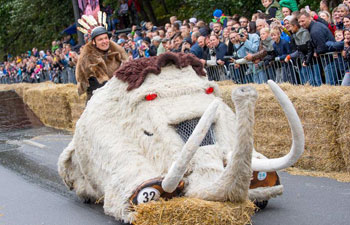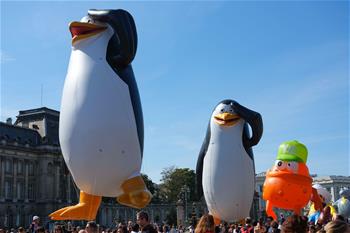CHICAGO, Sept. 16 (Xinhua) -- Researchers at the University of Illinois (UI) have developed soft robotic devices driven by neuromuscular tissue that triggers when stimulated by light.
In a study, the researchers demonstrated a new generation of two-tailed bots powered by skeletal muscle tissue stimulated by on-board motor neurons. The neurons have optogenetic properties: upon exposure to light, the neurons will fire to actuate the muscles.
"We applied an optogenetic neuron cell culture, derived from mouse stem cells, adjacent to the muscle tissue," said UI mechanical science and engineering professor Taher Saif. "The neurons advanced towards the muscle and formed neuromuscular junctions, and the swimmer assembled on its own."
After confirming that the neuromuscular tissue was compatible with their synthetic biobot skeletons, the researchers worked to optimize the swimmer's abilities.
"We used computational models to determine which physical attributes would lead to the fastest and most efficient swimming," Saif said. "Given our understanding of neural control in animals, it may be possible to move forward with biohybrid neuromuscular design by using a hierarchical organization of neural networks."
The envision of this advance leads to the development of multicellular engineered living systems with the ability to respond intelligently to environmental cues for applications in bioengineering, medicine and self-healing materials technologies.
However, the researchers acknowledge that like living organisms, no two biohybrid machines will develop to be exactly the same.
"Just like twins are not truly identical, two machines designed to perform the same function will not be the same," Saif said. "One may move faster or heal from damage differently from the other, a unique attribute of living machines."
The study has been published in the Proceedings of the National Academy of Sciences.

















